
HFIPS celebrates UNESCO International Day of Light on May 16 each year.
What is light?
Light is electromagnetic radiation that can be detected by the human eye. Electromagnetic radiation occurs over an extremely wide range of wavelengths, from gamma rays with wavelengths less than about 1 × 10-11 metres to radio waves measured in metres.
Light is energy, a kind of radiation consisting of photons whose individual energy levels correspond to specific wavelengths.
Light is also a kind of wave, somewhat like ocean waves or sound waves. Waves carry energy from one place to another.
No single answer to the question "What is light?" satisfies the many contexts in which light is experienced, explored, and exploited.
But no doubt that light matters.
How does light matter and contribute?
The physicist is interested in the physical properties of light; the artist is in an aesthetic appreciation of the visual world; the farmers depend on light to grow their plant; by interpreting electromagnetic radiation, astronomers glimpse the earliest epochs of the universe, measure the general expansion of the universe, and determine the chemical composition of stars and the interstellar medium.
And we, as ordinary people in our daily life, turn on the light reading to our children.
YES! On the most fundamental level through photosynthesis, light is necessary to the existence of life itself, and many applications of light have revolutionized society through medicine, communications, entertainment and culture.
ENERGY
Light, when seen as an energy, it is environment-friendly. It comes to our life now as solar energy. In fact, the energy from the sun that reaches the Earth can be converted into heat and electricity, and governments and scientists worldwide are working to develop affordable and clean solar energy technologies. Solar energy will provide a practically-inexhaustible resource that will enhance sustainability, reduce pollution and lower the cost of mitigating climate change.
Another form of using light as energy, is "around the corner," awaiting further development. For this latter source of energy we refer to the use of powerful lasers to create fusion under controlled conditions.
TECHNOLOGY
Across the world and in almost every span of our life, photonics and light-based technologies work on solving key societal challenges, such as energy generation and energy efficiency, healthy ageing of the population, climate change, and security. Through the sense of sight, light is a primary tool for perceiving the world and communicating within it. Social media, low cost telephone calls, video conferencing with family and friends – these are three examples of how the internet allows people around the world to feel connected in a way that has never before been possible in history. Known as phototherapy, the use of light in medical treatment is producing surprisingly successful results in the treatment of a variety of ailments from topical infections and chronic wounds to autoimmune and chronic degenerative diseases.
And all of this technology is because of light!
What is International Day of Light?
The International Day of Light is a global initiative that provides an annual focal point for the continued appreciation of light and the role it plays in science, culture and art, education, and sustainable development, and in fields as diverse as medicine, communications, and energy. The broad theme of light will allow many different sectors of society worldwide to participate in activities that demonstrates how science, technology, art and culture can help achieve the goals of UNESCO – education, equality, and peace.
The International Day of Light is celebrated on 16 May each year, the anniversary of the first successful operation of the laser in 1960 by physicist and engineer, Theodore Maiman. This day is a call to strengthen scientific cooperation and harness its potential to foster peace and sustainable development.

Logo of International Day of Light
HFIPS light-based effort for a better world
A spectrum is formed by a ray of light passing through a prism. Red and violet are at opposite directions of the spectrum. Different atoms or molecules have their own characteristic spectral lines. In this way, matters and their chemical compositions could be identified through their characteristic lines, which is called spectral analysis.
Most of observation and detection technologies and instruments developed by HFIPS for environment protection are based on spectral analysis.
The Anhui Institute of Optics and Fine Mechanics (AIOFM) is the main institute of HFIPS and focus on the environment-based photoelectric researches.
For decades, AIOFM has been dedicating to offering a solution to domestic and international environment issues. The researchers of AIOFM take spectral analysis as a powerful tool and utilize it in many complex areas like deep sea, jungle with complex ecosystem, crossroad at metropolis, sky and even space. A great deal of fundamental data about target particles have been obtained and will be very helpful for researchers to deep understand the problems of environment and then to resolve the challenges.
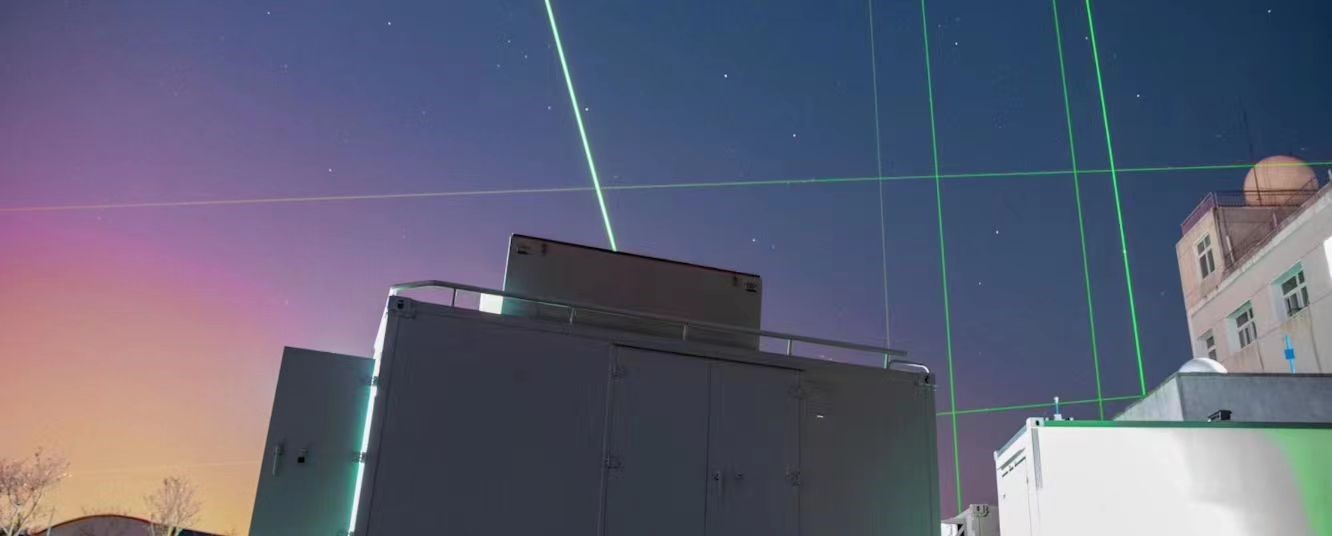
Laser for air detection emits from AIOFM’s campus
For environment protection
Basic research on atmospheric physics and chemistry
For more accurate detection, the researches of AIOFM should know well the target particles and especially their optical properties.
Given this, the institute established a research center working on atmospheric physics and chemistry and conducting basic research to explore optical properties of target chemical components, like aerosols, free radicals, and volatile organic compounds (VOCs) etc. The center also develops combined or independent technologies and instruments.
Photochemical research on important matter in the air
To explore the optical properties of aerosols, a suspension of fine solid particles or liquid droplets in air, the center has been working on developing technologies or programes.
The researches build arrays of advanced experimental instruments under their innovative detective method or program. For example, the center applies broadband cavity enhanced absorption spectroscopy to obtain aerosol extinction spectrum. They combine, for the first time, the broadband cavity enhanced absorption spectroscopy (BBCES) with an integrating sphere for synchronous measurement of scattering coefficient and extinction coefficient of particles.
For free radicals, one kind of atoms or molecules with an odd (unpaired) number of electrons, they use spectrum-based platform to explore how radicals regenerate in a chemical cycle and to understand the reaction dynamic through their own innovative way.
They install a low temperature superconducting magnet to a smog chamber to monitor free radicals in a real-time manner. They put BBCES and chemical amplification together to realize online measurement for peroxy radicals (RO2).
In addition, they employ several kinds of light sources, like vacuum ultraviolet (VUV) discharge lamp and synchrotron radiation, as the photoionization source in their home-made high-resolution and highly sensitive time-of-flight mass spectrometers to probe free radicals and the chemical compositions of aerosols.
This is the foundation for the following development of technology and engineering.
Technology, engineering and instruments
Basic research is just the start. Good knowing of target component and its optical reaction mechanism leads to a better development of key technology. The center focuses on key technology development as well.
They use high resolution and high sensitivity absorption spectroscopy (including long-range absorption spectroscopy, modulated absorption spectroscopy, photoacoustic absorption spectroscopy, infrared laser heterodyne spectroscopy and magnetic rotation absorption spectroscopy) to figure out innovative and efficient method to detect different kinds of components or gases, especially important pollutants.
Based on basic knowledge and key technology, a series of analytical instruments have been designed and manufactured. The center has the spectrometers/instruments for monitoring the emission of greenhouse gases and the leakage of natural gas pipeline.
They also put their absorption-spectrum-based instrument in the forest, grassland and moors for methane measurement; Ocean is also a workplace for their spectrum-based equipment that is laid deep down the sea to measure the concentrations of CO2 and CH4.
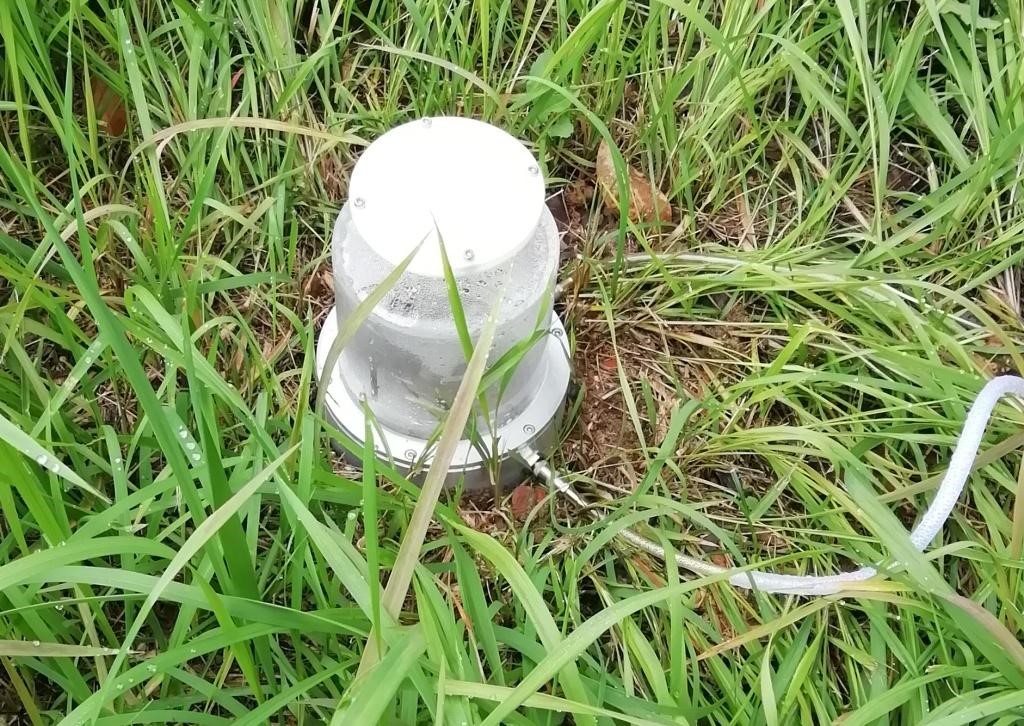
CH4 Detection instrument was installed on the grassland.
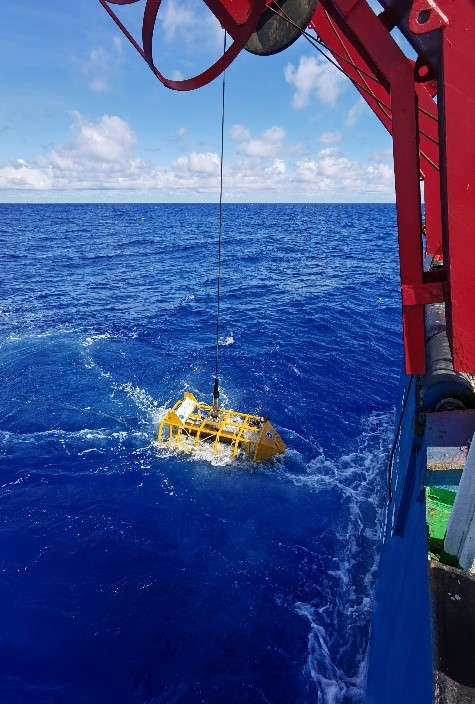
CO2 detection instrument was place in the South China Sea
For a long time, these spectrum-based instruments have been working quietly in different places detecting important particles in a fast and real-time manner, to expand our knowledge of how complex air pollution take place and lend us a big hand for making a better planet.
For medical use
Non-invasive Detector for Early Warning of Diabetes
Light is also a powerful and safe tool to detect our skin though which we can read more about our health.
HFIPS researchers have developed the entire technology that had been involved in the scan equipment manufacturing, from the scan to the data process, among which skin tissue spatially-resolved fluorescence spectroscopy technology was thought to be the key.
Advanced Glycation End Products (AGE) are a class of stable end products occurring as a result of condensation, rearrangement, cleavage and oxidation modification of free amino groups of large-molecule substances including proteins, amino acids, lipids or nucleic acids with aldehyde groups of reducing sugars under non-enzymatic conditions, which was discovered first by L. C. Maillard, a French chemist, and then is referred to as Maillard Reaction.
HFIPS researchers proposed the strategy to detect AGE in skin tissue just by emitting low intensity light but highly safe for people on skin. Then the AGE will reflect fluorescence signal that is collected by a high-precision and high-sensitivity array detector. After a data process and analysis, a risk assessment report will be printed out.
The equipment helps people know the risk of developing diabetes at early stage and then they can do something, like improve the diet or the lifestyle.
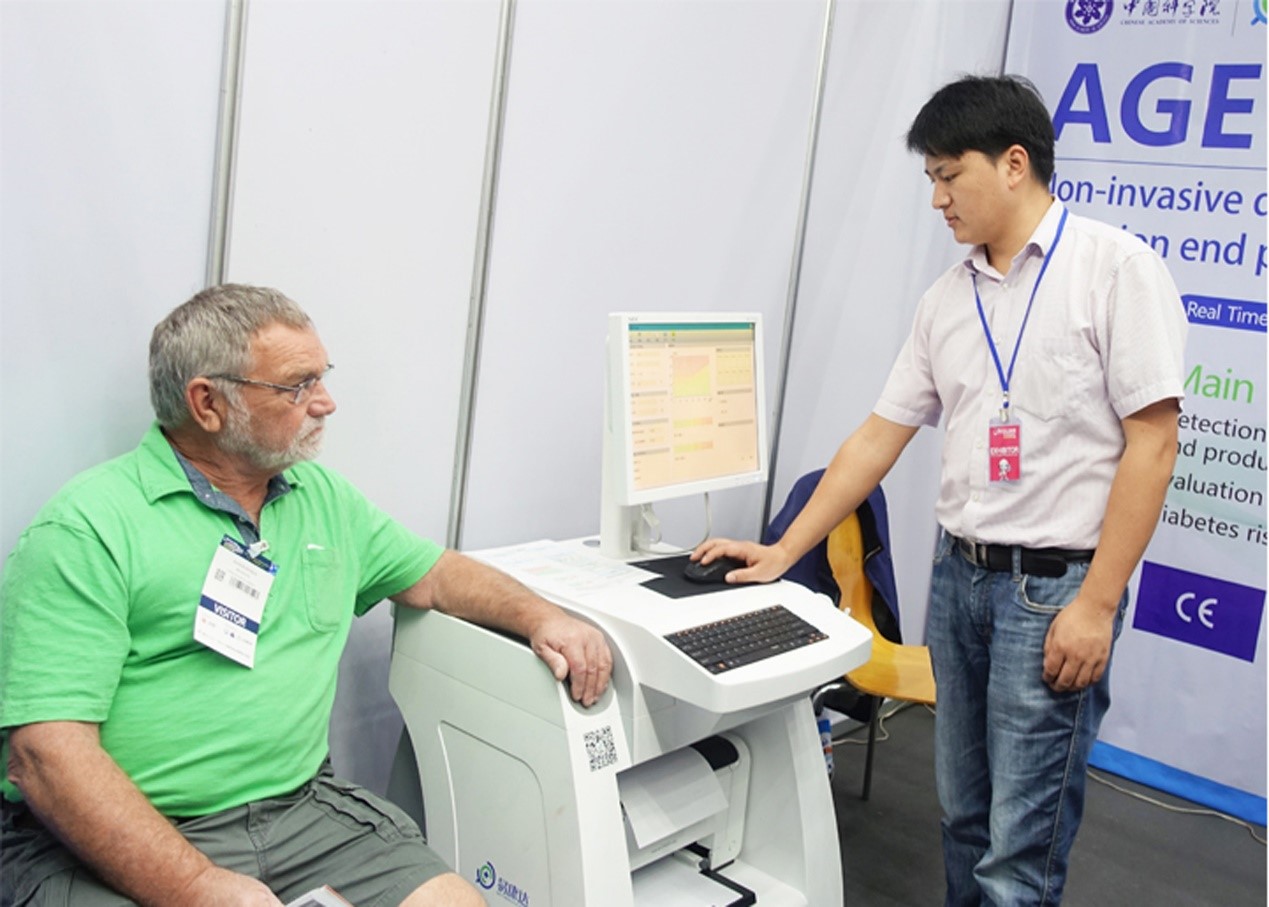
Non-invasive detector of diabetes
Smart functional robot for simultaneous disinfection of both air and object surface
Light can do many things that are beneficial to us. Working in some special environment to reduce the exposure of people to dangerous conditions is one of those benefits.
HFIPS researchers have also developed a smart functional robot that realized simultaneous disinfection of both air and object surface by using dry frog hydrogen peroxide and Ultraviolet C radiation.
The robot can automatically identify the disinfection object and control the positioning of the manipulator according to the user's needs, so as to achieve fixed-point and accurate disinfection. Therefore, the robot is applicable in many medical environments, like Intensive Care Medicine (ICU), Disinfection Supply Center and Static Delivery Center, etc.

Smart functional robot for simultaneous disinfection of both air and object surface
For safer world
Fast on-site drug detection
HFIPS researchers offers our local police a full-chain of technology for drug detection.
HFIPS cross-disciplinary team had been working together to build up a full chain technology in fast on-site drug detection from fabricating a series of enhanced Surface-enhanced Raman Spectroscopy (SERS) substrates, proposing a new method to separate drug from body fluid, building database to the detection equipment development. Now, the technology has been applied extensively by police system.
Their solution is actually a portable detection kit that includes a series of standardized Surface-enhanced Raman Spectroscopy (SERS) substrates, standardized purification of drugs and Raman instrument, all of which working together to realize an on-site drug detection as fast as 3-minute.
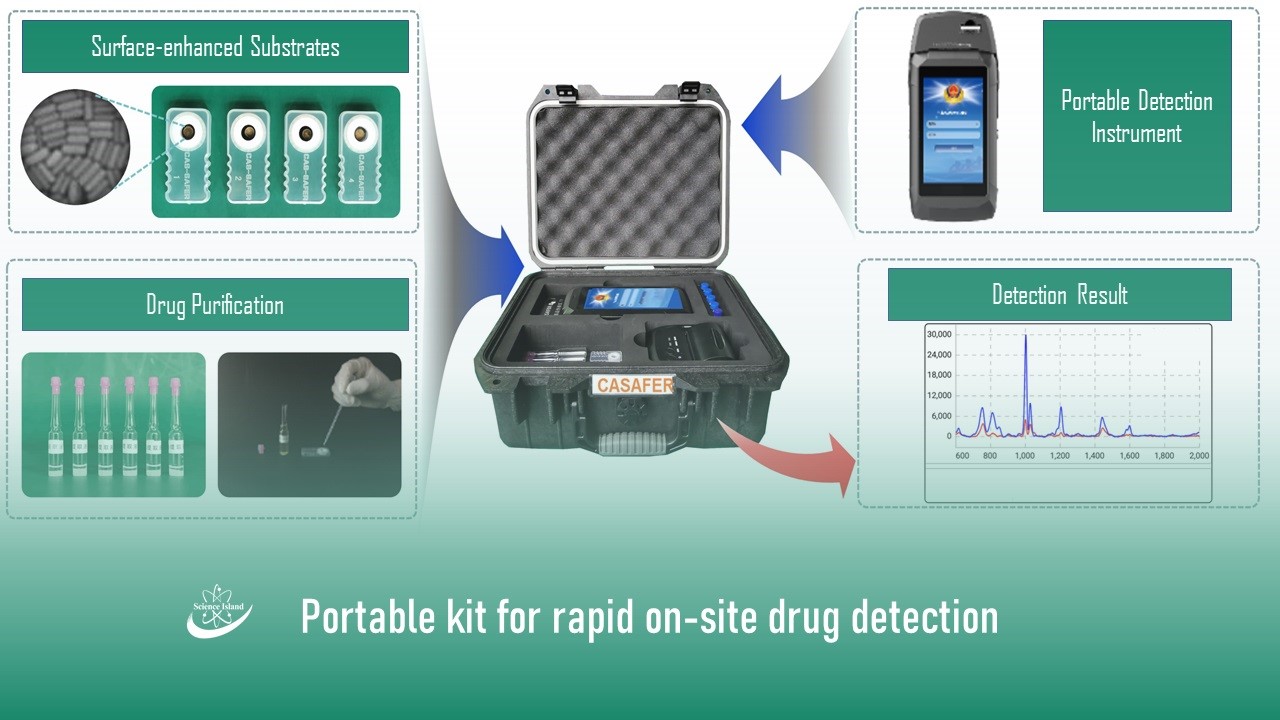
HFIPS is closely tied to light-based science and technology for the history of Science Island started from an establishment of optical research base. For half a century, the HFIPS’s expertise on science, technology and engineering of photoelectricity has getting expand and extend.
Just like the light can reach the earth from sun in space, light-based technology could also reach space from the earth by human effort. HFIPS forges ahead to deep space to explore more, pushing boundaries of human knowledge, making benefits of us all.